The dragons of Dragon Age: Origins
EXCLUSIVE: Screenshots of the beautiful beasts you’ll brutally murder
Dragon Age: Origins’ November release date is fast approaching, and so far, we’ve been having a blast bathing our ragtag party with the blood of our foes. That’s why we’re excited to bring you some exclusive screenshots and advanced lore from the folks at BioWare about Dragon Age: Origins’ most dangerous beast, the dragon. Expect more details on the majestic creatures you’ll brutally murder throughout the week, as we continue to reveal more Dragons from BioWare’s upcoming RPG.
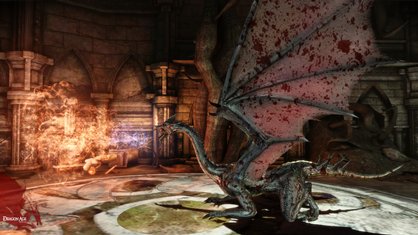
Day 1: The dragon
“Ask the dead if the beast was big enough.”
Dragons are quick, naturally armored, and command a torrent of fire as easily as a man hefts a sword. This is the stage of dragon most likely to be encountered by chance, and although they lack the terrifying size of a mature specimen, only an experienced group should pause long enough to verify it. Around the age of 100, females darken in color and grow the iconic wings of their kind. They become inquisitive and aggressive, and range far and wide in their search for a lair. This is the most likely time that the species will come into conflict with humans. Keeping the area free of suitable nesting sites such as abandoned ruins or open cave networks can encourage the creature to move on, but dragons are so rare that few think to take precautions. Dragons do not speak, but their resilience will surprise any who might regard them as unintelligent. Dragons that reach this age do not fall easily.
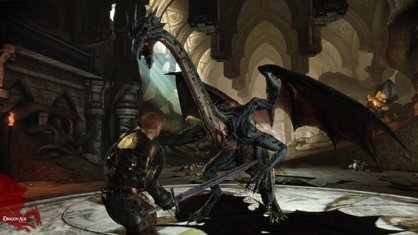
“Where you find one, there will be many. And one is enough.”
Drakes are intelligent, almost sly, but nonetheless ferocious beasts. Although frequently mistaken for a draconic subspecies, they are actually the mature form of male dragon. They have no need of powerful wings because once they bond with a female, they rarely travel far from her lair. A high dragon will have a dozen or more drakes guarding her young, constantly fighting amongst themselves for the right to mate. Drakes can live for a century, but usually die much earlier defending the lair. Tales are full of glorious “dragonhunters,” but many trace back to boasting warriors who appeased some terrified peasants with the hard-won but more common head of a young drake. Such a substitution leaves the true threat for the residents’ descendents. Areas that are repeatedly ravaged over many centuries may be witnessing the reemergence of the same high dragon, kept safe by its drake protectors.
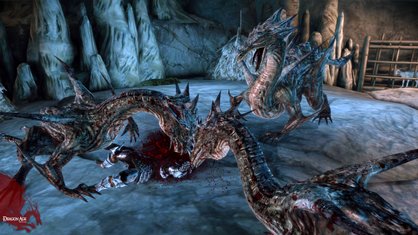
Above: Three drakes feed on an armored adventurer
Sign up to the GamesRadar+ Newsletter
Weekly digests, tales from the communities you love, and more
“Run. Just run.”
When bards tell of a beast that blocks out the sun, that strips villages of every living soul and burns the countryside to ashes, they speak of the high dragon. Living a thousand years or more, these magnificent creatures command a terror that belies their rarity, but it is more than deserved. Every few centuries, a high dragon leaves its lair to rampage. This is a prelude to breeding, but for the surrounding lands, it is devastation beyond measure. So impressive are these beasts that several dragon cults have been documented - groups of would-be worshippers gathering at the mouths of known lairs. High dragons suffer humans the same way sharks suffer pilot fish: there is no direct agreement - high dragons do not speak - but if the worshippers are careful, a tenuous relationship can develop. This does not come without sacrifice, but the risks and benefits of a tangible and active idol are sometimes preferable to casting prayers at distant and silent gods.
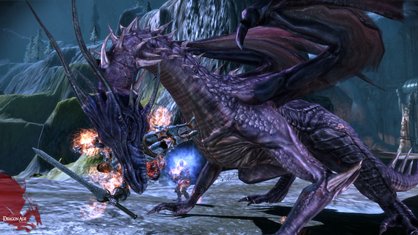
Above: A high dragon sharpens its teeth on a warrior
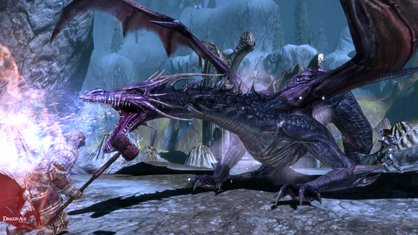
Oct 16, 2009


A primal primer to your blood spattered brethren in this ultraviolent RPG


